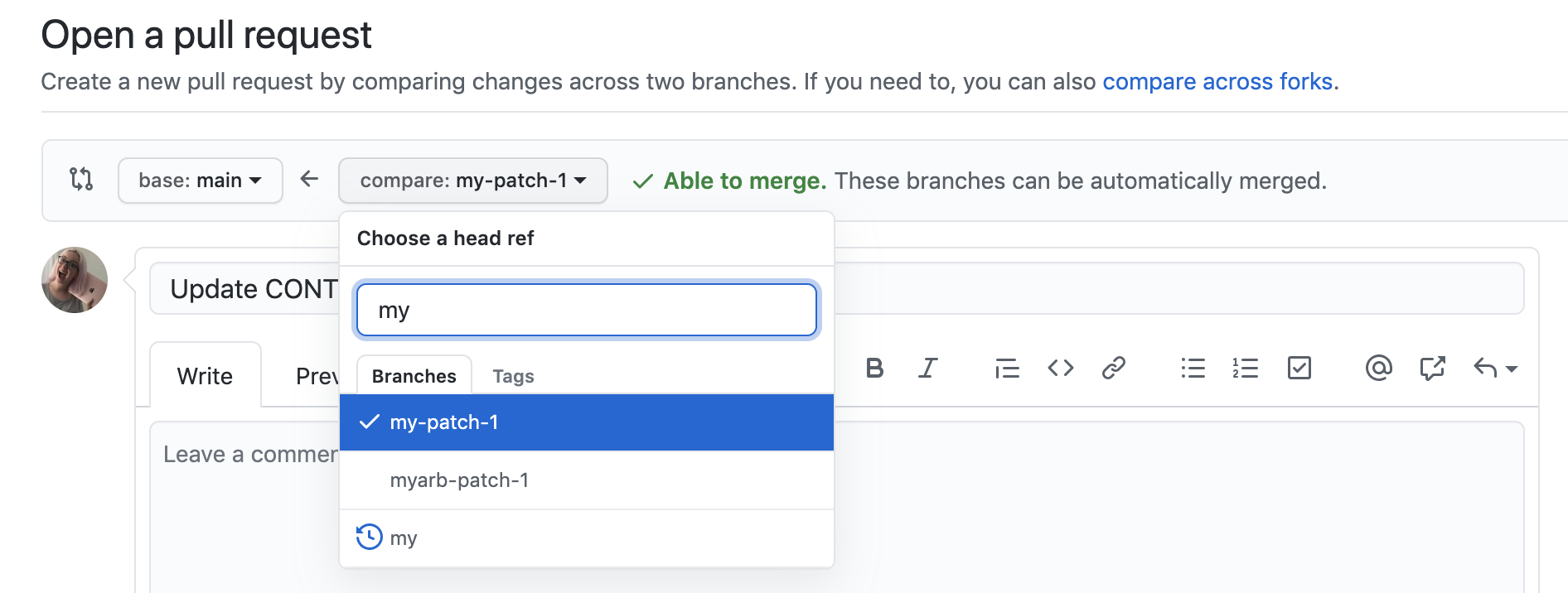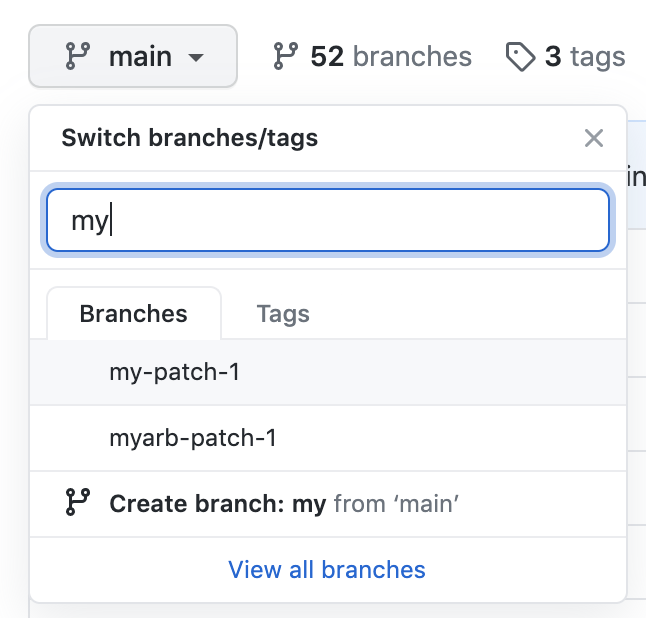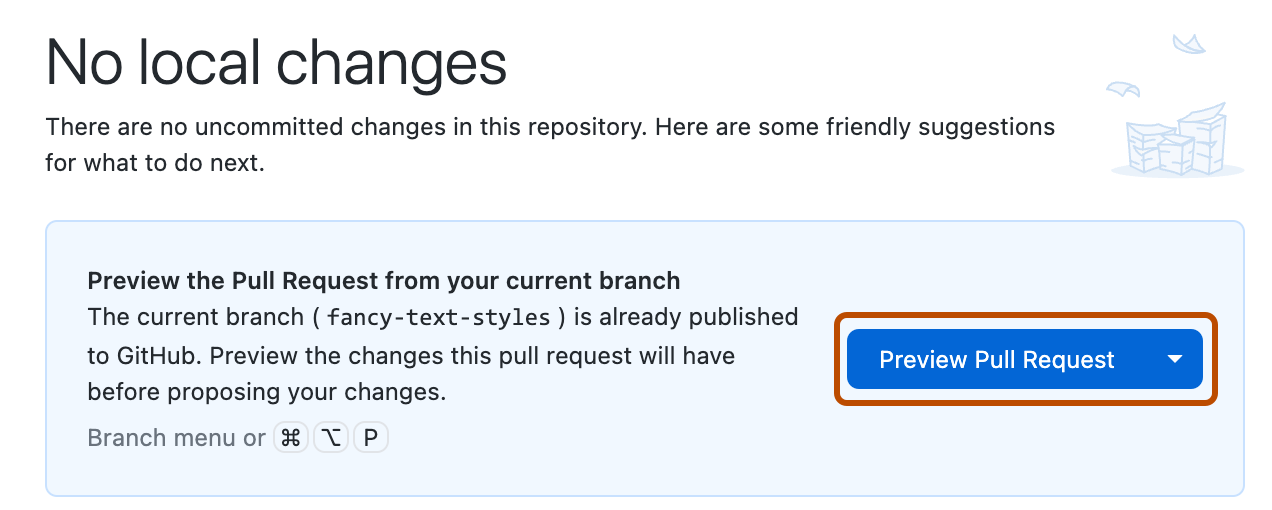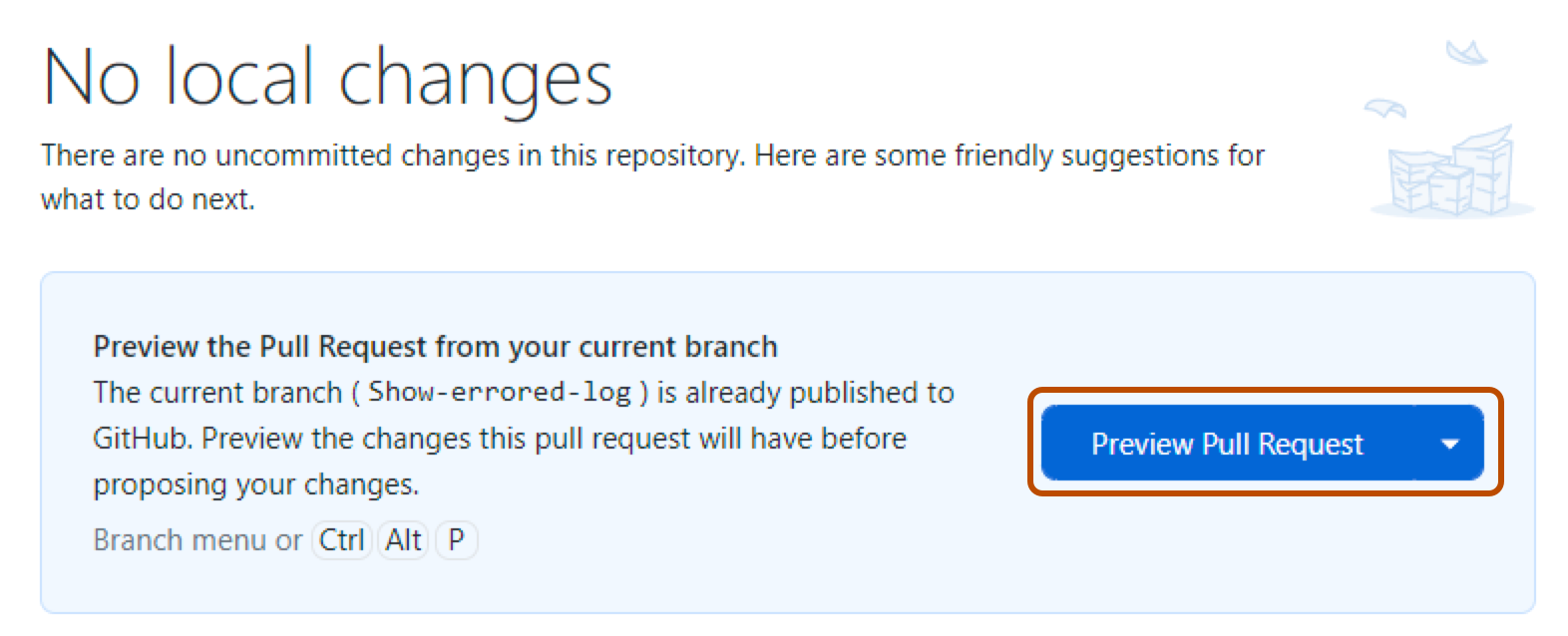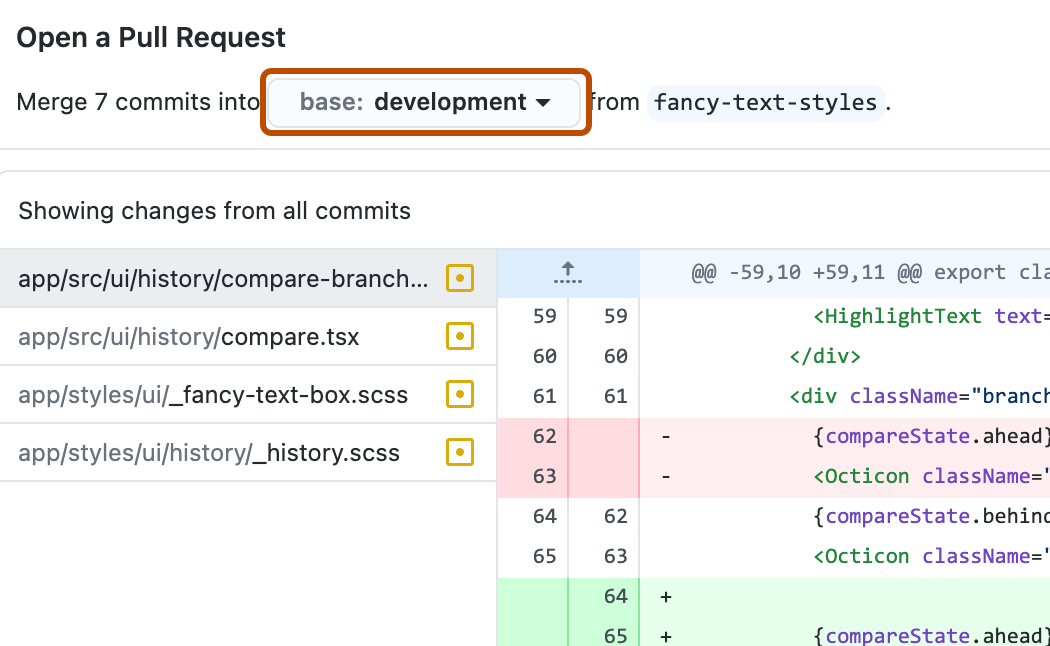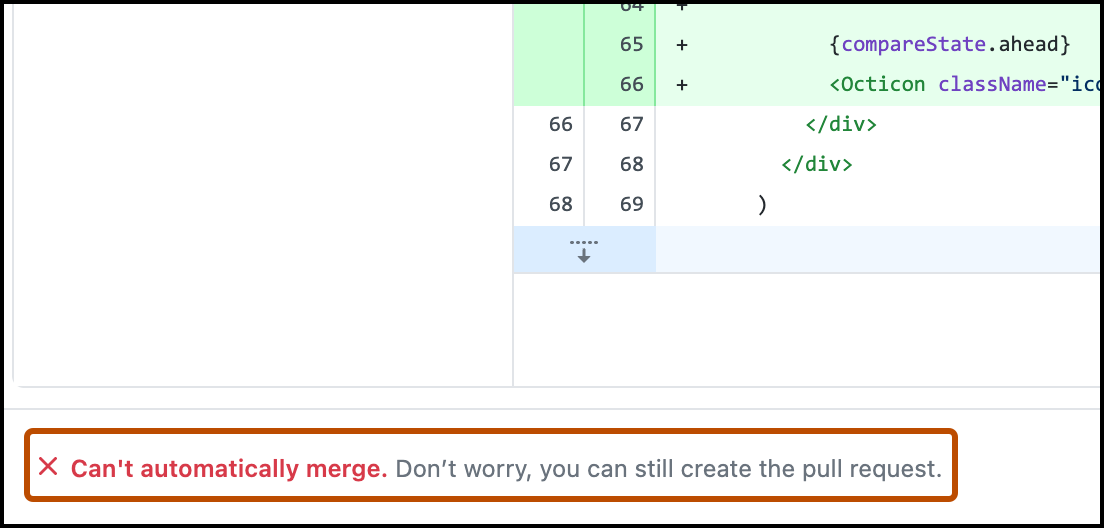| title | intro | permissions | redirect_from | versions | topics | ||||||||||
|---|---|---|---|---|---|---|---|---|---|---|---|---|---|---|---|
Creating a pull request |
Create a pull request to propose and collaborate on changes to a repository. These changes are proposed in a *branch*, which ensures that the default branch only contains finished and approved work. |
Anyone with read access to a repository can create a pull request. {% data reusables.enterprise-accounts.emu-permission-propose %} |
|
|
|
If you want to create a new branch for your pull request and do not have write permissions to the repository, you can fork the repository first. For more information, see AUTOTITLE and AUTOTITLE.
You can specify which branch you'd like to merge your changes into when you create your pull request. Pull requests can only be opened between two branches that are different.
{% data reusables.pull_requests.perms-to-open-pull-request %}
{% data reusables.pull_requests.close-issues-using-keywords %}
By default, pull requests are based on the parent repository's default branch. For more information, see AUTOTITLE.
If the default parent repository isn't correct, you can change both the parent repository and the branch with the drop-down lists. You can also swap your head and base branches with the drop-down lists to establish diffs between reference points. References here must be branch names in your GitHub repository.
When thinking about branches, remember that the base branch is where changes should be applied, the head branch contains what you would like to be applied.
When you change the base repository, you also change notifications for the pull request. Everyone that can push to the base repository will receive an email notification and see the new pull request in their dashboard the next time they sign in.
When you change any of the information in the branch range, the Commit and Files changed preview areas will update to show your new range.
Tip
{% webui %}
{% data reusables.repositories.navigate-to-repo %}
{% data reusables.repositories.new-pull-request %}
- Use the base branch dropdown menu to select the branch you'd like to merge your changes into, then use the compare branch drop-down menu to choose the topic branch you made your changes in. {% data reusables.repositories.pr-title-description %} {% data reusables.repositories.create-pull-request %}
{% data reusables.repositories.asking-for-review %}
After your pull request has been reviewed, it can be merged into the repository.
{% endwebui %}
{% cli %}
{% data reusables.cli.cli-learn-more %}
To create a pull request, use the gh pr create subcommand.
gh pr createTo assign a pull request to an individual, use the --assignee or -a flags. You can use @me to self-assign the pull request.
gh pr create --assignee "@octocat"To specify the branch into which you want the pull request merged, use the --base or -B flags. To specify the branch that contains commits for your pull request, use the --head or -H flags.
gh pr create --base my-base-branch --head my-changed-branchTo include a title and body for the new pull request, use the --title and --body flags.
gh pr create --title "The bug is fixed" --body "Everything works again"To mark a pull request as a draft, use the --draft flag.
gh pr create --draftTo add a labels or milestones to the new pull request, use the --label and --milestone flags.
gh pr create --label "bug,help wanted" --milestone octocat-milestoneTo add the new pull request to a specific project, use the --project flag.
gh pr create --project octocat-projectTo assign an individual or team as reviewers, use the --reviewer flag.
gh pr create --reviewer monalisa,hubot --reviewer myorg/team-nameTo create the pull request in your default web browser, use the --web flag.
gh pr create --web{% endcli %}
{% desktop %}
-
Click Preview Pull Request. {% data variables.product.prodname_desktop %} will open a preview dialog showing the diff of the changes between your current branch and the base branch.
{% mac %}
{% endmac %}
{% windows %}
{% endwindows %}
Alternatively, to go straight to {% data variables.product.prodname_dotcom %} to create your pull request, select the dropdown icon and click Create Pull Request.
-
Confirm that the branch in the base: dropdown menu is the branch where you want to merge your changes.
{% data variables.product.prodname_desktop %} will advise you whether the current branch can be automatically merged into the base branch.
-
Click Create Pull Request. {% data variables.product.prodname_desktop %} will open your default browser to take you to {% data variables.product.prodname_dotcom %}. {% data reusables.repositories.pr-title-description %} {% data reusables.repositories.create-pull-request %}
{% enddesktop %}
{% ifversion fpt or ghec %}
{% codespaces %}
- Once you've committed changes to your local copy of the repository, click the Create Pull Request icon.

- Check that the local branch and repository you're merging from, and the remote branch and repository you're merging into, are correct. Then give the pull request a title and a description.
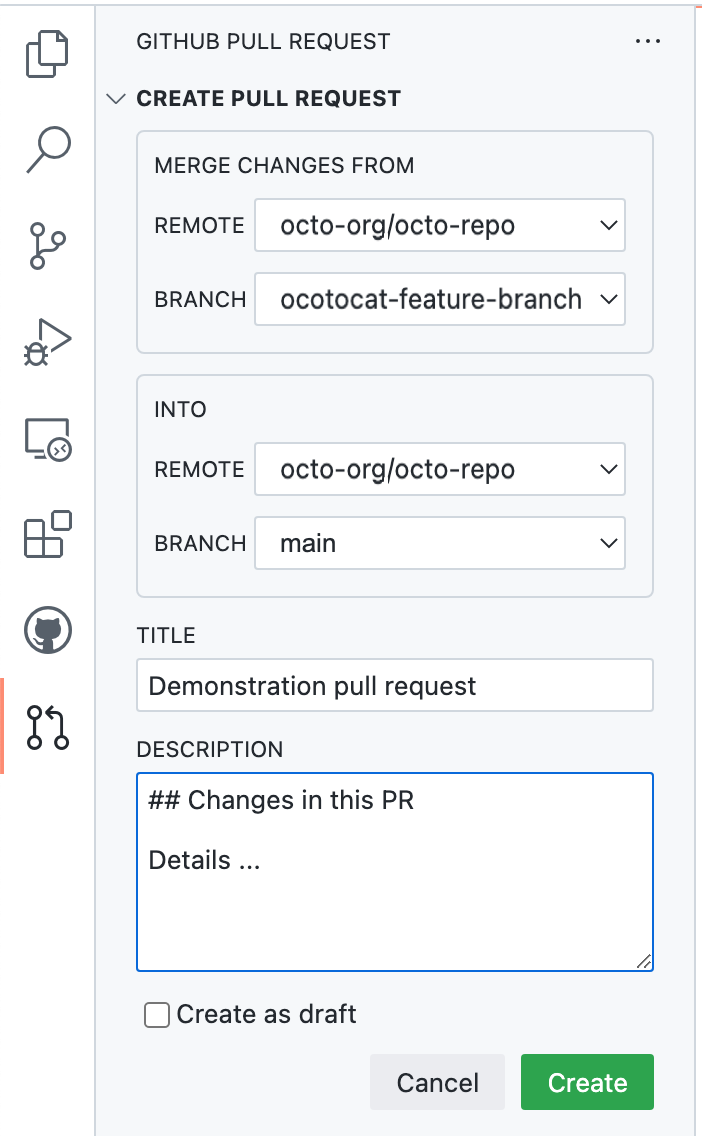
- Click Create.
For more information on creating pull requests in {% data variables.product.prodname_github_codespaces %}, see AUTOTITLE.
{% endcodespaces %}
{% endif %}
After you have opened your pull request, you can continue making changes to the files by adding new commits to your head branch.
{% webui %}
You can also make changes to files on the {% data variables.product.github %} website.
- On {% data variables.product.github %}, navigate to a pull request in a repository. {% data reusables.repositories.changed-files %}
- Scroll down to the file you want to make changes to.
- If the pull request has a lot of files, you can use the filter to locate the file. See AUTOTITLE.
- Above the file you want to change, click {% octicon "kebab-horizontal" aria-label="Show options" %}.

- In the menu, click Edit file.
- Make your changes in the editor and when committing your change, choose to commit directly back to your head branch.
{% ifversion copilot-hadron %}
If you are part of the {% data variables.release-phases.public_preview %} of {% data variables.product.prodname_copilot_workspace %}, clicking Edit on a file on the "Files changed" tab will open the file in a {% data variables.product.prodname_copilot_workspace %} on {% data variables.product.prodname_dotcom %}. In a {% data variables.product.prodname_copilot_workspace %}, you can still make changes to the file but also make changes to other files in the repository, group your changes into a single commit, and take advantage of {% data variables.product.prodname_copilot_short %} code completion.
You can access {% data variables.product.prodname_copilot_workspace %} by choosing to edit an individual file or by clicking Open in {% data variables.product.prodname_copilot_workspace_short %} in your pull request's right sidebar. For more information about {% data variables.product.prodname_copilot_workspace %} and joining the {% data variables.release-phases.public_preview %}, see AUTOTITLE.
{% endif %}
{% endwebui %}
